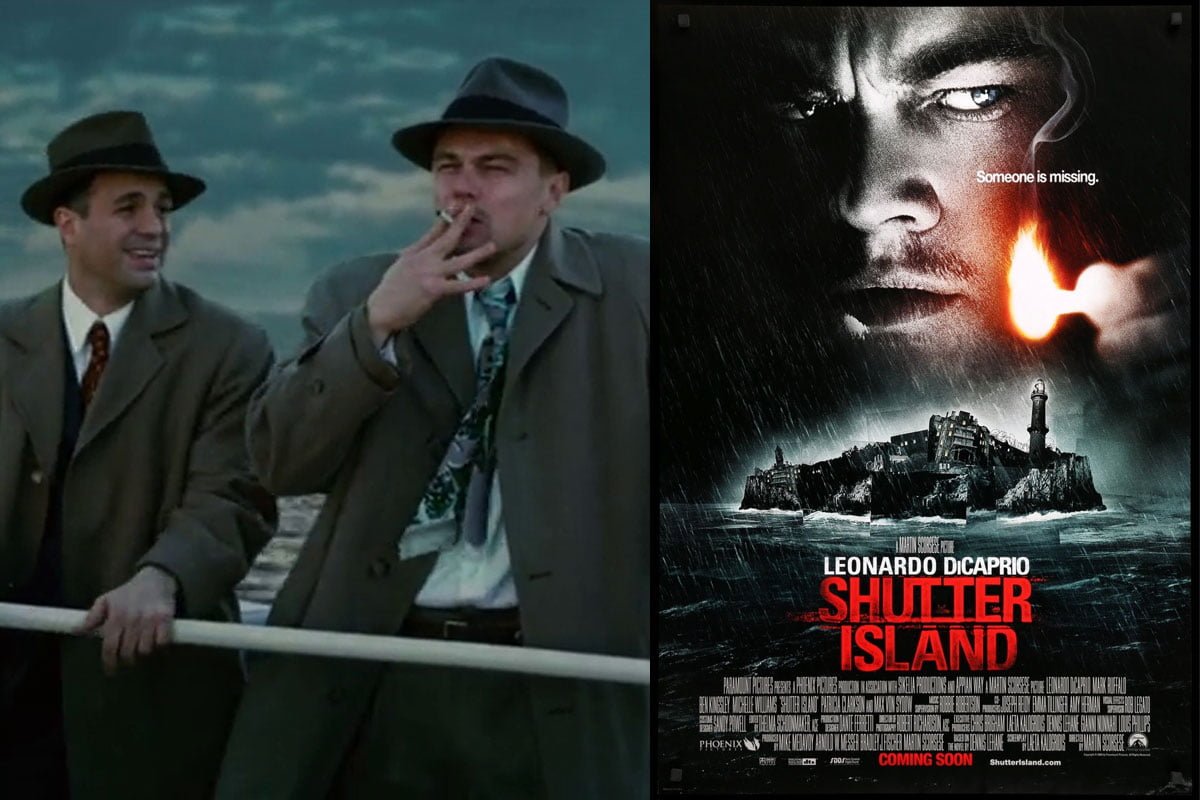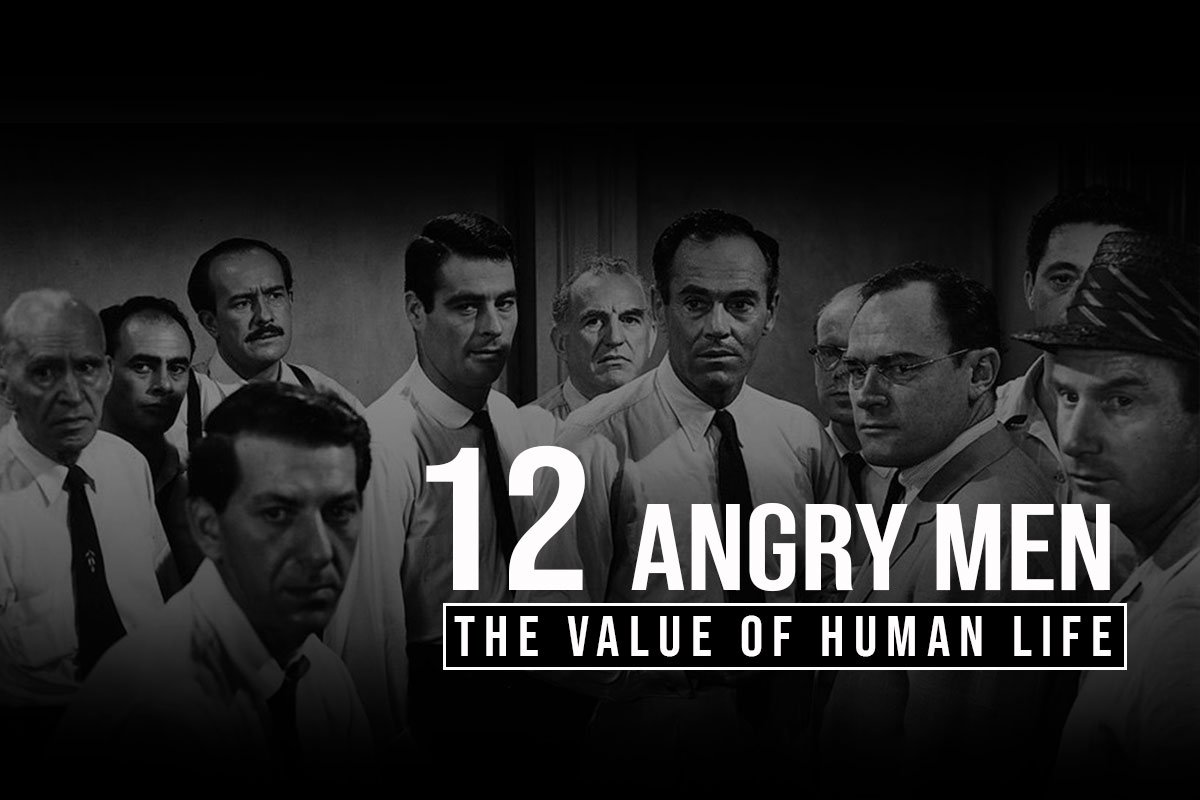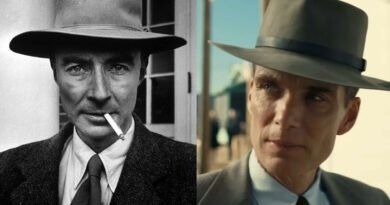The Kafkaesque Psychological Thriller – Shutter Island: Film Review
“Crazy people are the perfect subjects. They talk, nobody listens.”
Martin Scorsese’s mind-blowing plot-twisting film Shutter Island continues to hold its most-deserving place among the best thrillers even more than a decade after its release. The sets a cloudy, gloomy and nightmarish atmosphere and takes us through the intricate entanglement of the human psyche. It plays with the viewer’s sense of foreboding and anticipation and finally comes to a mind-twisting end.
The protagonist of Shutter Island Teddy, alias Andrews Laeddis, deals with an acute case of schizophrenia and is treated through what is known as ‘psychodrama treatment’. The film is an adaptation of Denise Lehane’s 2003 novel by the same name. In this shutter island film review, we will discuss Teddy’s illness, his treatment and the non-perishable cinematic value of Shutter Island.
Summary
The scene opens to a vast ocean expanding as far as one can see. Grey sky, anticipating a storm looms over the two main characters travelling on a ship. Shutter Island film dates back to 1954 when U.S. Marshal Edward Daniels (Leonardo DiCaprio), known as Teddy, arrives at Ashecliffe Hospital to investigate the case of Rachel Solando (Emily Mortimer), a missing patient, who has drowned her three children and is known to be a very dangerous criminal patient. Teddy is accompanied by his new partner Chuck Aule (Mark Ruffalo).
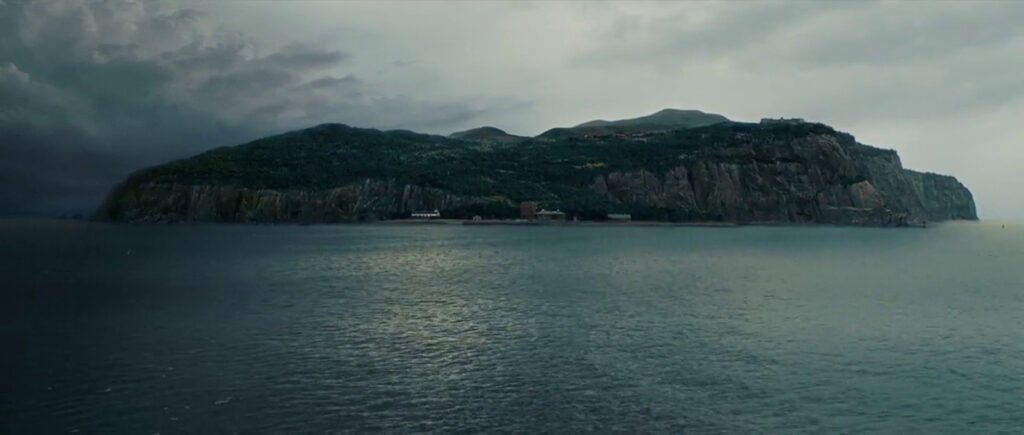


On reaching the hospital, Teddy finds everything about the place quite unsettling. The staff and the doctors are uncooperative. The patient is behaving strangely on his arrival. Racheal Solando’s doctor, Lester Sheehan, left the hospital soon after her disappearance. However, the place is enclosed and far away from the rest of the world, which means Rachel is hiding somewhere on the island. There’s a lighthouse on that island, at a little distance from the hospital, and no one knows what goes on there. All these sound too suspicious to Teddy to leave the island without investigating. A little later, the hospital declares that Rachel is found. When Teddy goes to meet her, he finds her and her condition tells him that she is truly ill.
Due to his sickness, he gets a terrible migraine and takes medicine from Dr Cawley (Ben Kingsley), quite unwillingly. After the medication, he experiences dreams of his days as a U.S. Army soldier and about his wife, which feel too real to be just dreams. The thundering storm further restricts him from leaving the island. However, he continues his investigation, going as far as it requires and encounters many strange revelations. Soon his partner Chuck is missing and while searching for him, he finds a woman hiding in the cave, the real Rachel Solando (Patricia Clarkson). His suspicion rises and he goes on to unravel what hides within the walls of the lighthouse.
Cinematic Value
Shutter Island’s worthiness has a major cause and that is the cinematic value of the film. It creates a world of anticipation and fearful turnings. The plot twist not only comes as a surprise to us but also makes us reconceptualize the events of the film all over again. Plot twists are the most delicate turns in a film’s storyline since its success or failure remains unpredictable until the release of the film. Director Martin Scorsese however, has done a brilliant task at blowing the audience’s mind at the end.
Shutter Island, through its mysteries, add to our fear as well, mainly because the audience doesn’t know until the end what exactly is the most fearful factor – in Rachael Solando’s disappearance, in the fact that there can be many more such cases and the authorities are involved, the sudden disappearance of Teddy’s partner Chuck, or in the fact that all this is someone being trapped in their own imagination.
Imagine being on a closed island and sensing that there’s something terribly wrong with the place and all the people there and that there’s no way you can escape the place. And then when you finally find a clue about what is wrong, it’s too late. Being in the shoes of Teddy, the audience shares the same dread. What makes Shutter Island nightmarish is the fact that everything that’s happening to him is his imagination, far away from reality. The main fear lies in the supposedly incurable mental disorder.
Besides, what gives Shutter Island a noir effect is that Teddy, the protagonist, is flawed, perhaps beyond cure, that the other important characters too have baggage and that none of the characters is credible. The film grabs our senses right from the beginning with the vast sea expanding the borders of the frame and the grey sky looming over the ship, foreshadowing something sinister and dreadful. Hitchcock’s vertigo effect further clouds Teddy’s mind, making it much more difficult for him to take quick action.




The pouring rain, the thunderous sound of the wind, the storm, and the dense forest evoke uneasiness since it implies the characters’ being trapped on the island. The tall walls of the forest and the dingy corridors of a place where insanity is tough to tell apart from the sane evoke claustrophobia. Chuck’s sudden disappearance after leaving his half-lit cigarette on the cliff, a missing patient and a woman living in a cave in the mountains evoke a sense of helplessness since Teddy is no longer to help any of them, not even himself.
Teddy’s Trauma and Altered Identity
Once you’re declared insane, anything you do is called part of that insanity. Reasonable protests are ‘denial’. Valid fears ‘paranoia’.


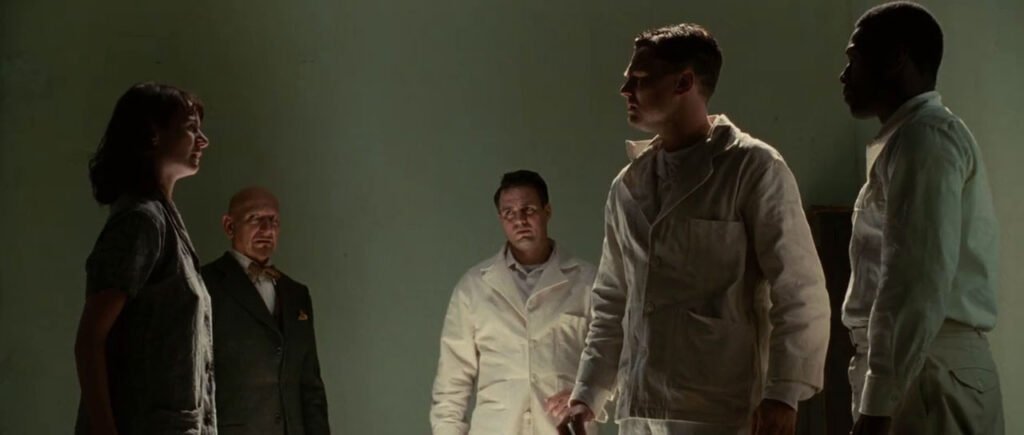
US Marshal Teddy Daniel turns out to be Andrew Laeddis, the missing patient in Ashecliffe Hospital is none but himself, his friend Chuck is his doctor Lester Sheehan, and the woman Rachel Solando, who drowned her three children, was Dolores Chanal (Michelle Williams), Andrew’s wife, the children were his own. Shutter Island is a case of Andrew’s or Teddy’s memory lapse, perhaps his defence mechanism for the traumatic events of his life.
A single trauma can affect different people differently depending upon their coping abilities. Teddy’s war traumas, further heightened by his alcoholism, finally reach their saturation point when his bipolar wife, whom he apparently neglected, drowns their children and remains completely unaffected and unaware of her criminal insanity. Teddy shoots his wife at that very moment but this revenge does not help him in any way.
Teddy’s illness can be diagnosed as Schizophrenia, with delusion and hallucination being his major symptoms. Schizophrenia can be caused due to genetic disorders, environment, trauma or a combination of all. Persistent delusions, persistent hallucinations and disordered thinking are among the major symptoms. Schizophrenia takes a lifelong treatment without a guarantee of a complete cure.
Sigmund Freud has defined the human mind in three parts – the conscious mind, the subconscious mind and the unconscious mind. In simple words, events that are painful for the human mind, our natural coping mechanism helps us to forget and move on, pushing those painful events into our subconscious mind, which reappear in our dreams and occasionally in our behaviours. But for the events that are too traumatic for a human mind to even cope with or forget, the mind denies the occurrence of it and pushes it into our unconscious mind, making us believe it never happened and instead creating a parallel reality which is easier for the mind to accept.
Teddy’s completely altered identity, his denial of the truth and his return to the parallel reality tell us that his mind has refused to accept reality due to its harshness. But since his unconscious mind is aware of the reality, he remembers Andrew Laeddis, only not as himself. His unconscious mind is also aware of the three children who were drowned, but not as his own children but as Rachel Solores’s; both Edward Daniels and Rachel Solores are anagrams of Andrew Laeddis and Dolores Chanal. In his two years as a patient in Ashecliffe Hospital, Teddy’s delusional disorder is what he sees as reality, even after repeated reminders of the true incident. He sees his doctor as his colleague and has created a fake scenario where he is investigating a serious case since these are easier for his mind to accept.
A well-knit Psychodrama
Dr Cawley, along with Dr Sheehan and other staff of Ashecliffe, carries out a psychodrama intended to remind Teddy about his true identity. Psychodrama is an action method, in which people role-play various parts in order to investigate the insights into the patient’s forgotten life. In Shutter Island, multiple hospital staff play roles that would fit Teddy’s story and might be helpful in regaining his memory. However, even after repeated attempts by Dr Cawley and his team, Teddy’s memory regain is only temporary and he slumps back into his fictional world. By the end of the film, it can be safely assumed that Teddy would never regain his memory permanently.
Shutter Island is haunted and hints at film noir in its own way. It is a well-knit, psychologically thrilling film. It shows the devastating extent to which schizophrenia may affect the human mind. Shutter Island also shows the impacts of trauma one might be dwelling in. It makes us feel sorry for Andrew since he is internally suffering from his traumas, his mind constantly in denial of the true events; the relieving factor is that he has found his solace in impersonating Teddy. The film successfully keeps the audience enveloped in horror and anticipation, excellently heightened cinematically.
However, shutter island film received mixed reviews; while some believed it wasn’t Martin Scorsese’s best film, others believed the film is a piece of art, provided one gives it multiple views. It is indeed an aesthetically exciting and amazingly puzzling film, with all the pieces ultimately combining to form the correct image. Nonetheless, Shutter Island gave Martin Scorsese one of his best openings at the box office.
“Which would be worse – to live as a monster? Or to die as a good man?”

